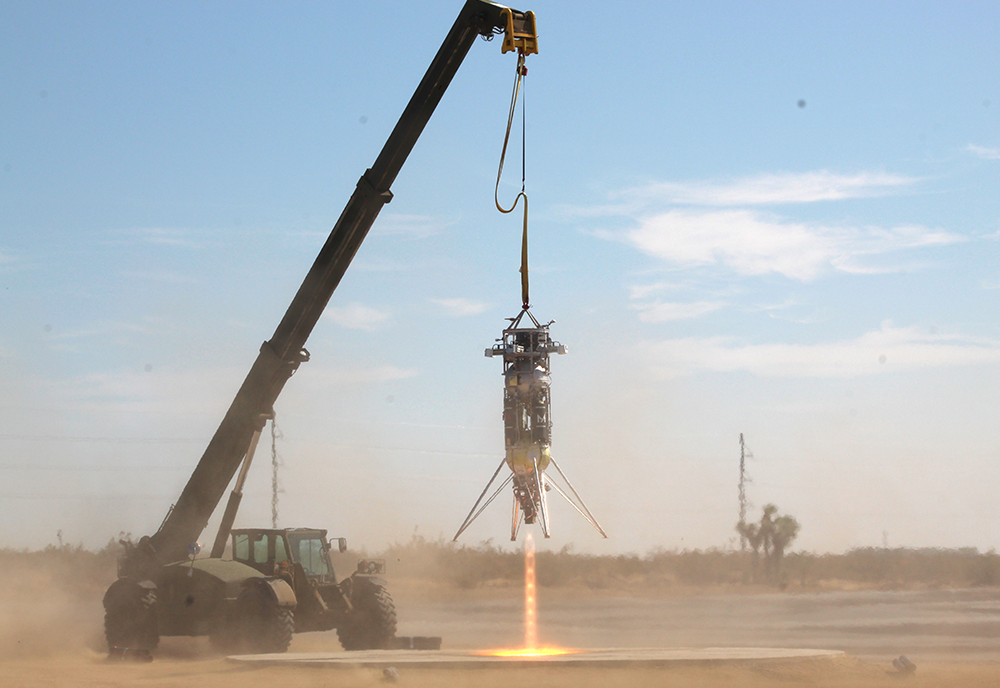By Tina Meketa, University Communications and Marketing
As NASA continues exploring the moon’s southern polar region to find ice, USF engineers are developing technology to make landing on the moon safer and less expensive.
A team from the USF Institute of Applied Engineering just returned from the Mojave Air & Space Port in Mojave, California, where they flight-tested their technology’s ability to collect data about surface features, such as rocks and craters, to generate an accurate topographical map for landing navigation and hazard avoidance. This technology could ultimately allow for low-cost, fully autonomous landing on the moon – enabling rapid exploration and eventually the establishment of an outpost for astronauts through the availability of safe drinking water and the ability to create oxygen and rocket fuel.
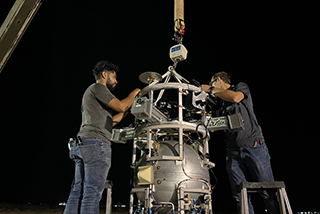
USF team tests their invention, the A-LiST (Automated Lidar Scanning Topography)
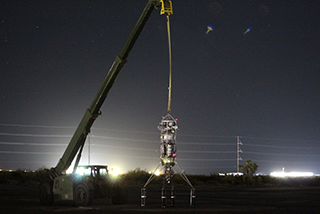
The A-LiST was launched from the Mojave Air & Space Port in Mojave, California
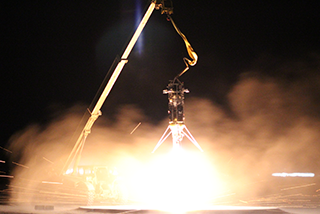
The USF invention was integrated onto a rocket-powered lander for a flight that simulated a lunar landing
“Lunar exploration is uniquely inspiring. From the Apollo-era ‘giant leap’ to today’s commercial landing missions, people have yearned for access to the moon,” said Peter Jorgensen, director of engineering for the IAE. “Leveraging our expertise in software, systems engineering and integration, the IAE team intends to dramatically reduce costs of precision landing technology, enabling increased potential for rapid lunar landings, further cementing U.S. leadership in space exploration and giving USF engineers incredible work to do.”
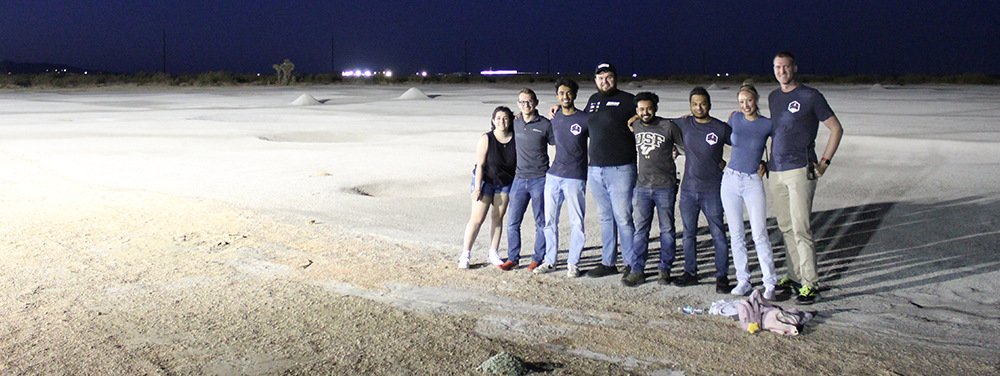
The USF team at the Lunar Surface Proving Ground, designed to look like the surface of the moon
Jorgensen was joined by five IAE staff members and two undergraduate students from USF for the test flight as part of the NASA TechLeap Prize’s Nighttime Precision Landing Challenge, managed by the agency’s Flight Opportunities program. The USF team, along with challenge winners from two other institutions, received $500,000 in funding to advance their innovative solutions to reduce the size, mass and cost of precision terrain mapping technology. Known as A-LiST (Automated Lidar Scanning Topography), the USF invention was integrated onto the lunar logistics company Astrobotic’s Xodiac rocket-powered lander for a flight that simulated a lunar landing.
The Xodiac lander traveled up about 1,600 feet – nearly the height of One World Trade Center – and then descended toward the company’s Lunar Surface Proving Ground, a test field made to look like the surface of the moon. The field is covered in a stucco material to emulate the lunar surface with artificial rocks and craters. Because the moon’s water ice is permanently shadowed in areas of the polar regions, the USF technology was tested at night during a new moon to simulate the difficult lighting conditions.
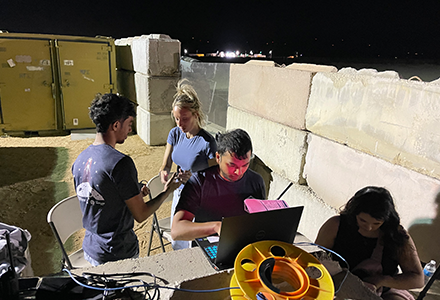
“Astrobotic is proud to provide flight testing for USF’s A-LiST as part of the TechLeap Prize’s Nighttime Precision Lander Challenge,” said Sean Bedford, director of business development for Astrobotic. “Our Xodiac lander and Lunar Surface Proving Ground are ideally suited for demonstrating critical lunar lander technologies here on Earth before they’re relied upon in space. This collaboration bridges the gap between Earth and the moon, ensuring these innovations are not just viable but also mission-ready for the challenges of repeatable, sustainable lunar exploration.”
During the flight, the A-LiST system created a complete topographical map by combining data from multiple commercially available light detection and ranging (LiDAR) sensor heads with a proprietary algorithm, allowing it to simultaneously collect data across multiple perspectives. While the technology can help the U.S. become more competitive in space exploration, it has commercial capabilities here on Earth.
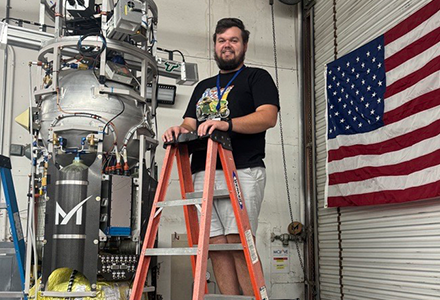
USF senior Eamon Conners
As part of the USF team, senior Eamon Conners assisted with pre- and post-flight testing, along with other critical aspects of the Xodiac lander project. The Tallahassee native started interning with the Institute of Applied Engineering two years ago and was recently promoted to engineering technologist.
“Having the privilege to be involved with a project as engaging as NASA’s TechLeap challenge is an experience that few engineering students will attain and I am grateful that I was able to be a part of it,” Conners said. “I’ve known for some time that I want to take my degree and my experience into the field of aerospace, so being able to not only witness, but apply my skills and contribute to a successful free flight really cemented this vision for myself in the future. Working with my fellow teammates on this project meant so much to me as a graduating senior, and it only inspires me to work as hard as I can to achieve my aerospace dreams.”
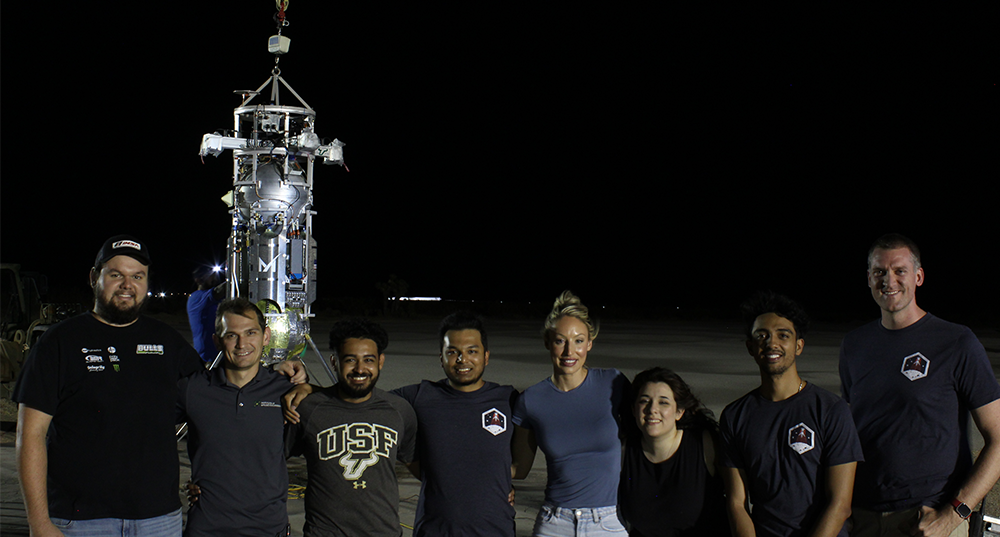
The IAE team is now analyzing data to enhance the performance of the A-LiST system. They hope to conduct further testing to qualify the system for testing in space, and ultimately, for landing on the moon, as well as for other Earth-based precision mapping applications.
They are also eligible for additional prize funding based on the system’s performance during the test flight, which will be determined at a later date. Additionally, the Florida High Tech Corridor provided funding to support student engagement through paid internships, including flight simulation and data processing research, hardware prototype analysis and testing, as well as travel expenses.
